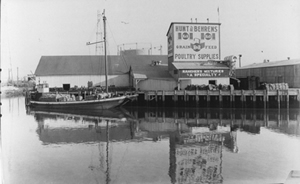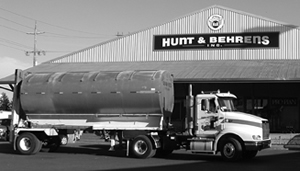Premiums for organic products come at a cost to more than just customers.
An organic product’s price has been affected at many points before it reaches its final customer. Organic certification is a lesser-known cost, but one that is increasing in the growing organic market. Certified-organic operators caught between more income and increased costs had a chance for relief in 2014.
The U.S. 2014 Farm Bill increased funding for the Organic Certification Cost Share Program, which covers up to 75 percent or up to $750 of certification costs for applicants. That covers only about 10 percent of USDA National Organic Program certification costs for Hunt & Behrens, Inc., said John Martin, the animal-feed processor’s formulating nutritionist.
“Every little bit count,” he said.
Hunt & Behrens in Petaluma, Calif., has had a long-standing goal to provide “the best feed at a minimum fee” that sometimes puts it at odds with increased costs. Feed prices are competitive in the patchwork rural and urban area north of San Francisco and companies like Hunt & Behrens still have to deliver service, Martin said.
Hunt & Behrens’ goal for high quality and low fees developed as business grew. Company namesakes Marvin Hunt and Carl Behrens built a feed mill along a river near downtown Petaluma in 1921, according to the company’s website. Hunt & Behrens adapted to the nutrient needs of its customers who raised dairy and beef cattle, chickens, sheep, turkeys and pigs. The processor moved to a larger facility on Lakeville Street and was able to deliver bulk, mixed feeds, which lowered costs more for Hunt & Behrens’ customers.

Organic feed became a bigger part of the business as customers in Sonoma and Marin counties looked for a reliable supply of local, sustainably produced feed, Martin said. Dairies in the area started certifying organic in the 1990s, with about 75 percent of the dairies certified today. Hunt & Behrens became certified organic through the Organic Crop Improvement Association in 2002. Martin said he thought organic rules made many Hunt & Behrens customers put emphasis on preventing animal diseases through good nutrition and husbandry. That quality focus would reach end consumers in organic meat, milk and egg products.
“The organic movement has definitely made people look at operations more holistically,” he said.
The processor found it fit the demand for local, organic feed with employees known in the community as “Dan and Bob and John that I see at the coffee shop,” he said. “That I see downtown.”
Martin’s own family was a dairy-feed customer of Hunt & Behrens and he became an employee starting in 1998.
People were willing to pay more for organic feed [in a growing market], but Martin had a saying that to have ecological sustainability, you have to start with economic sustainability. The processor’s costs went up a tonnage increased since it became certified organic.
“Being organic certified has probably been helpful in that we try to price products fairly,” he said. “And we realize our customers need to be profitable.”
It’s the first time the processor received money for the cost-share program, though it has applied for four or five years. USDA-NOP’s 82 accredited certifiers have fees that can extend beyond the certification costs covered by the cost-share program. Those additional fees can cover services some of Hunt & Behrens’ organic customers appreciate, such as the added paper trail of OCIA’s transaction certificates, Martin said.

Other costs have come at the company level for Hunt & Behrens. The audit trail required for organic certification pushed the processor to upgrade its computer system that tracks lots for each ingredient that comes in and goes out, Martin said. The system made lot tracking and data collection easier, but it became nearly a full-time job for one of the office staff.
A 2005 USDA Economic Research Service showed there are cheaper places for organic feed than the North Bay area of California, but Martin said his customers are “able to capture the value that organic consumers see in multi-generational family farms, pastures and good farming practices.”
The OCIA Family Spotlight is a series of stories about OCIA members, in celebration of the International Year of Family Farming. Look for more stories about OCIA members in 2015, the International Year of Soils.
CONTACT
Date Published: February 12, 2015
Author/Title: Demetria Stephens
E-Mail: sandnuri@gmail.com
Phone: (785) 678-2475
Address: 2852 F Lane
Jennings, KS 67643
